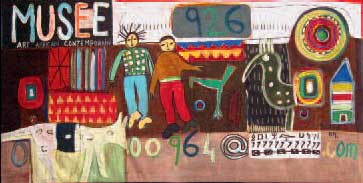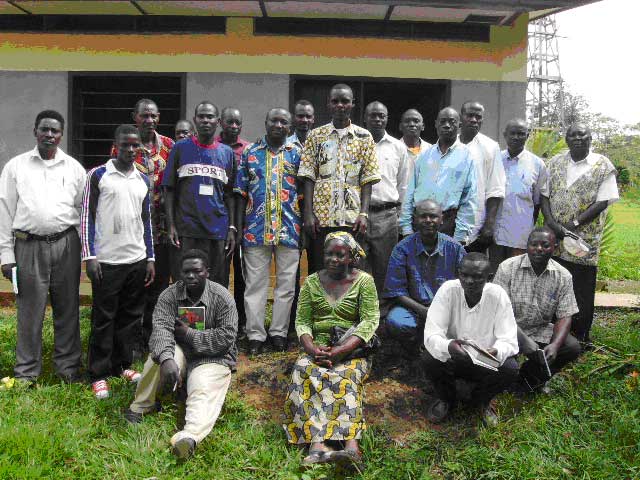
L’analyse du contexte
septembre 27, 2017
Regional Center for Development Support and Training
septembre 27, 2017Can we get out of the logic of criminalization?
1. A permanent round table on the issues of the mining sector
Pole Institute, after its series of studies on the problem of mining in the DRC, initiated a meeting this Tuesday 9 March 10 in Goma with representatives of sector operators, diggers’ cooperatives, customary chiefs, public services and partners South Kivu and Ituri in order to draw up an up-to-date inventory with a view to envisaging strategies which go in the direction of « construction », that is to say the establishment of a process which will eventually lead to the decriminalization of national resources so that they truly benefit the Congolese. At the end of the day, the principle of a permanent consultation table was unanimously accepted with the participants as the nucleus of departure. The structure will include representatives of local communities, public services, the private sector and Pole Institute and its partners involved in this issue. The mandate of this framework is divided into three main parts:
- Analyze the issues
- Identify proposals
- Building a lobby
2. Tumbled numbers
When one evokes the mines of eastern DRC, one thinks almost spontaneously to Bisie, this site from which almost 80% of the cassiterite exported from the province of North Kivu is extracted to the consuming countries of this mineral become strategic in the development of technology. But Bisie is also an agglomeration lost in the middle of nowhere, a « wild city » of more or less 13,000 people (artisanal diggers, beer sellers, restaurateurs, prostitutes, etc.) whose lives are punctuated by raids and uplift in the mining wells, under the « custody » of the armed elements whose identity varies according to the evolution of the local, provincial or national context. It is from this that this precious cassiterite, dug by the shovel, comes under the illuminating light of a flashlight.
The cassiterite will be transported to Njingala, the nearest trading center, 8 hours’ walk and 4 barriers away, and will continue on its long journey to Walikale center, from where the road a small plane coming from Goma, before being found in distant foundries in Belgium, Thailand or Malaysia. But what remains in Bisie, what dividends do the local populations derive from the exploitation of the entrails of their land? Not much. As in all the artisanal sites in the DRC, misery is the daily lot of these new damned subsoil, here called diggers.
Worse, according to statistics from the Provincial Division of Mines of North Kivu, the production curve of the Bisie site has been falling freely for the last three years. It went from 20 tons per day in 2008 to 15 tons in 2009 and 3.5 tons in 2010. « This Bisie site will no longer be operational within 10 or 20 years, » he said. Chief of Mines Division of North Kivu. But more than the quality of the mine itself, it is the operating conditions that are the basis for this decline in yield, notably the lack of adequate equipment to evacuate groundwater, the absence of a aeration and lack of electricity. By improving the working conditions of miners, the yield of the Bisie mine would be improved at the same time.
But with the culture of collecting and gathering strongly anchored in our country, who is thinking of investing in this direction? During the dictatorship of Mobutu and under the various regimes that followed the cannibalization of the mining companies that had contributed to the enrichment of the men in power. From GECAMINES to Katanga, there remains only a skeleton that is not finished boning; as for the MIBA, the former jewel of the diamond industry in Kasaï, it disappeared simply and simply. Who’s going to take care of Bisie, who does not have the least infrastructure?
3. The mines of North Kivu: an opportunity or a threat?
The province of North Kivu is not, strictly speaking, a region with a mining economy, as are the Kasai and the Katanga which we have just mentioned. North Kivu was well known, until a recent past for the fertility of its lands where the agro-pastoral activities prospered. The mining economy was located mainly in sites like Lueshe where SOMIKIVU exploited pyrochlore or informal and diffused as the extraction and marketing of gold in the territory of Lubero in the north. A small part of the population was involved in this sector, which Mobutism methods had criminalized to the point that the possession of a grain of gold or any other mineral matter was a source of great trouble if the services of safety caught the owner of it.
Beginning in the 1990s, the province of North Kivu entered a cycle of insecurity that began with the bloody inter-ethnic conflicts in the Masisi and Rutshuru territories, culminating in the successive wars of 1996 that culminated in the fall of Mobutu and that of 1998. The agricultural economy is taking a severe blow with the looting of livestock and the displacement of populations who cease to be producers to live as assisted in camps. It was also during this period that the coltan deposits were discovered in the territory of Masisi, whose boom will occur in 2000. The spin-offs on the incomes of some households are real, although this war context will force most to invest in cities like Goma, where whole districts will emerge from land under the coltan effect.
However, it is not only the civilian population that benefits from this mining sector that is timely discovered to compensate for the decline of the agricultural sector. The various rebel movements in the east of the DRC, the regular armed forces (FARDC), the foreign armed bands (FDLR, ADF-NALU) also benefit from it, either directly through the whole process, from extraction or indirectly by levying taxes on the flows in the spaces under their control, or by combining the two processes. This involvement of men and armed groups in the mining sector, suspected or accused of serious violations of human rights (massacres, rape, looting, etc.) is the cause of the mining of minerals in the mining industry, eastern DRC and the almost universal stigmatization of economic operators in the sector.
Different reports from NGOs and UN experts have denounced the men, companies and other structures that finance the war by maintaining commercial relations or allegiance with suspected armed groups. The bulk of the recommendations of these external reports, whose work is essentially the whistleblower, is systematically consistent with the outright embargo of mineral resources in eastern DRC. This criminalization of the mining sector in North Kivu and its banning of international trade is not without consequences for the local and national economy.
Indeed, in the context of the crisis and the conflicts that this province has gone through – and is still going through – minerals have yielded almost two-thirds of revenues in 2006, before the combined effects of the global economic crisis, lobbying for the embargo and contradictions of the Congolese legislation does not bring this contribution to almost nothing. Some counters have put the key under the mat, others struggle as best they can. The production of cassiterite fell from 733.4 tons in January 2009 to 395.5 tons in January 2010. The ambient moroseness is perceptible and money is no longer circulating in Goma or Bisie as in the past.
We are therefore faced with a mining economy that has become a complement to the problem of being a substitute for the agricultural economy but which must show a white paw, display a « conflict free » certificate for each package exported, if it wants to compete in the international market. Initiatives are being taken in this direction by local economic operators through the Federation of Entrepreneurs of the Congo (FEC), regional organizations such as CIGRL and donors such as GTZ to ensure and reassure traceability and transparency of the flow of minerals from eastern DRC. « Progress is being made every day, we are resolutely involved in finding solutions to all these problems, but our efforts are not taken into account by NGO reports, » says John, economic operator, with bitterness. « They act as if the situation on the ground is static, while it is dynamic. » Traceability is, according to the same source, from the trader to the final consumer, very schematically from Njingala to Brussels, Beijing or Kwala Lumpur. But from the well to Njingala, it is the reign of the shadow!
Onesphore Sematumba 11 march 10
© Source Pole Institute – www.pole-institute.org

